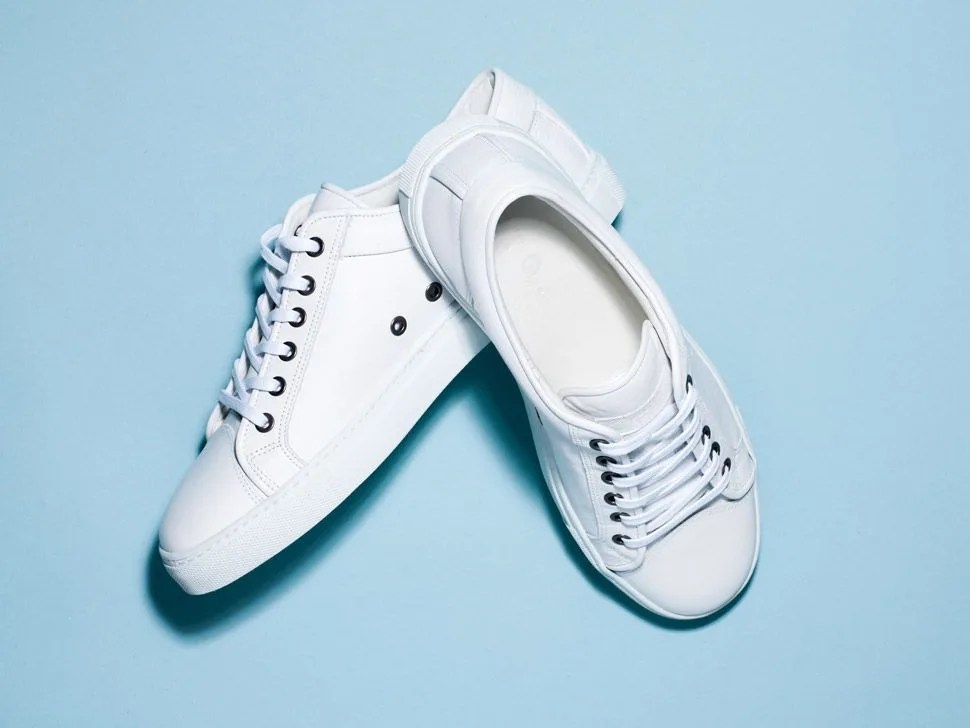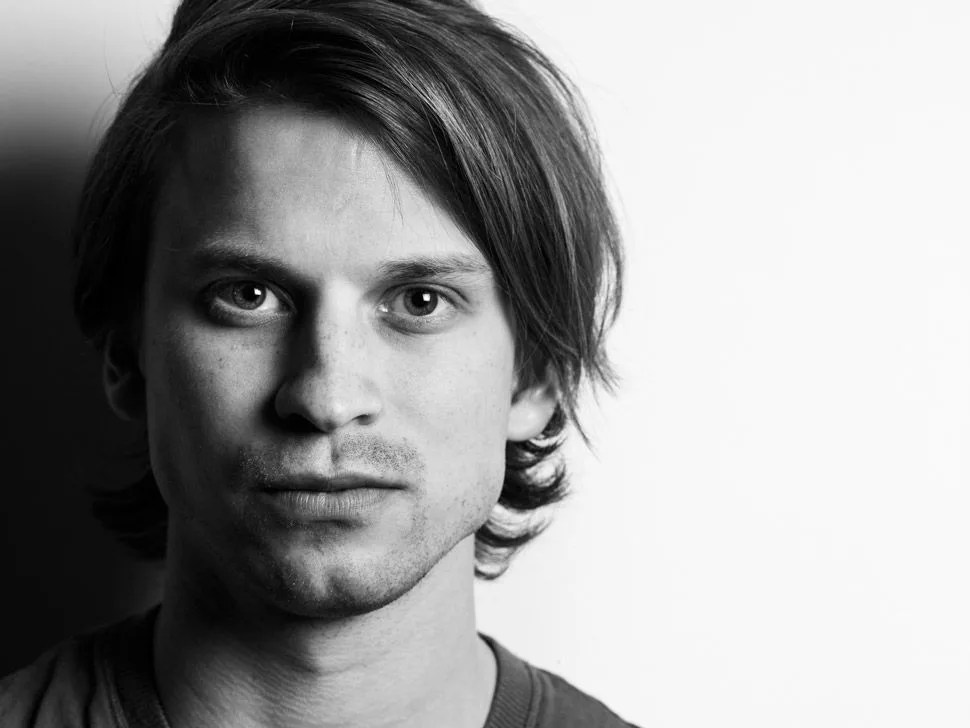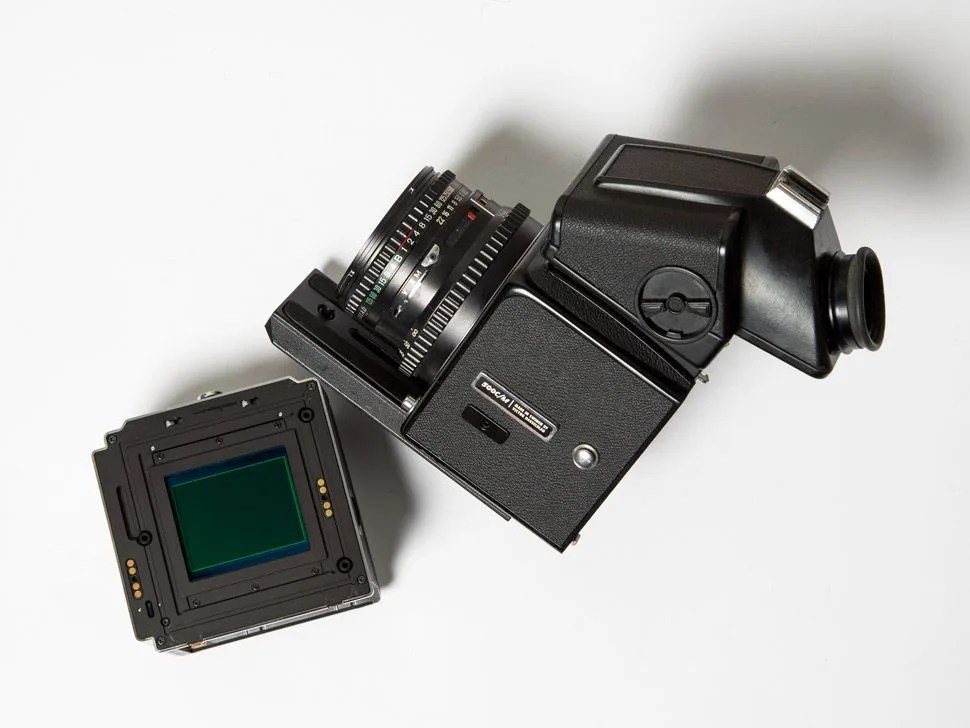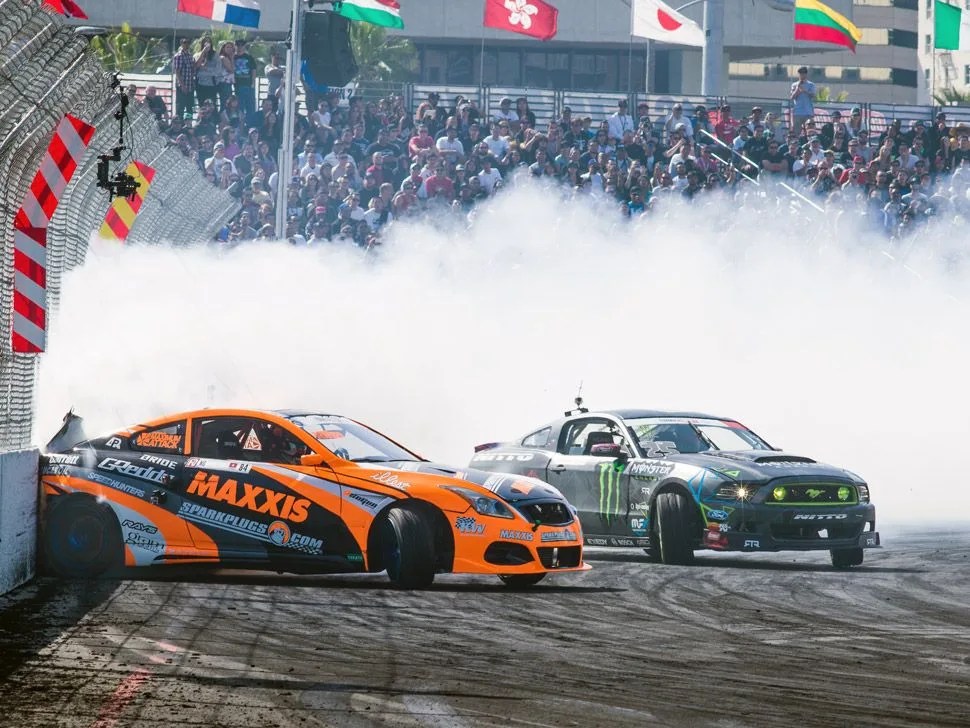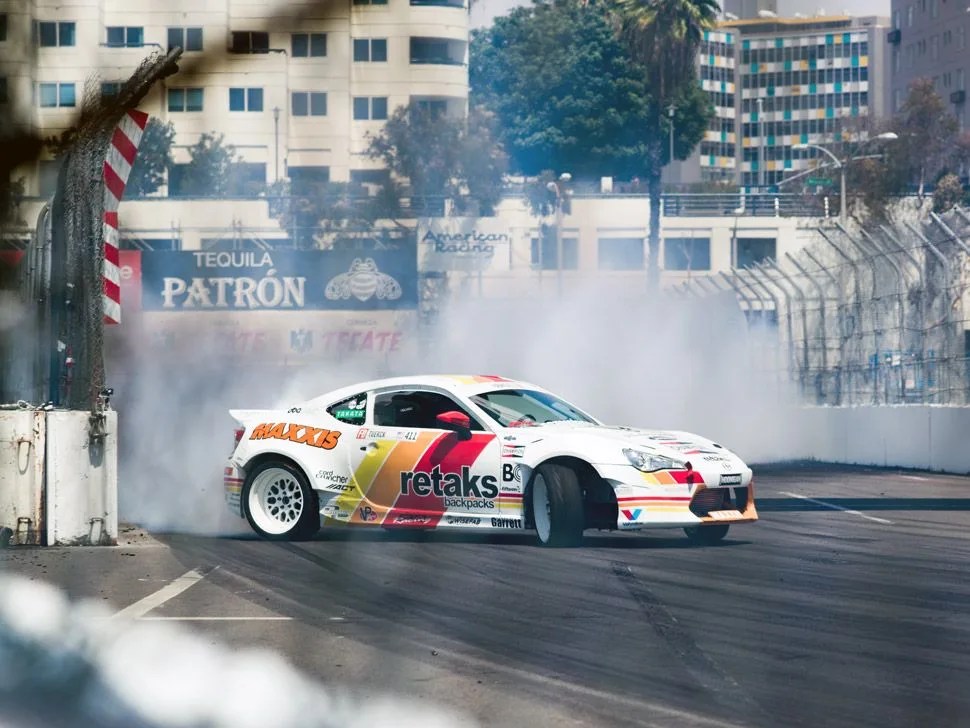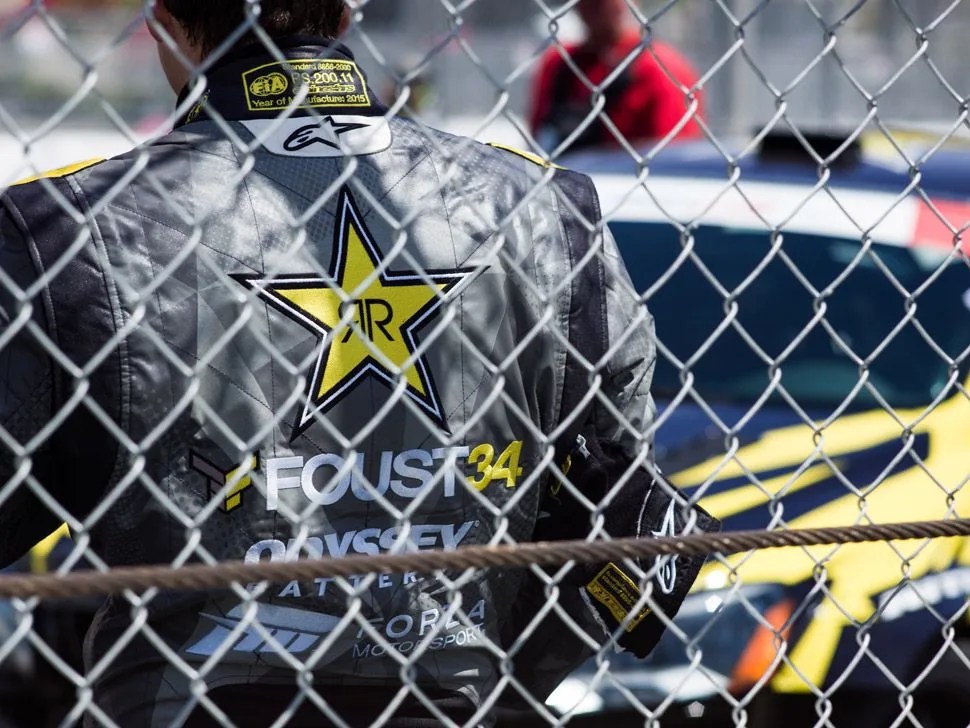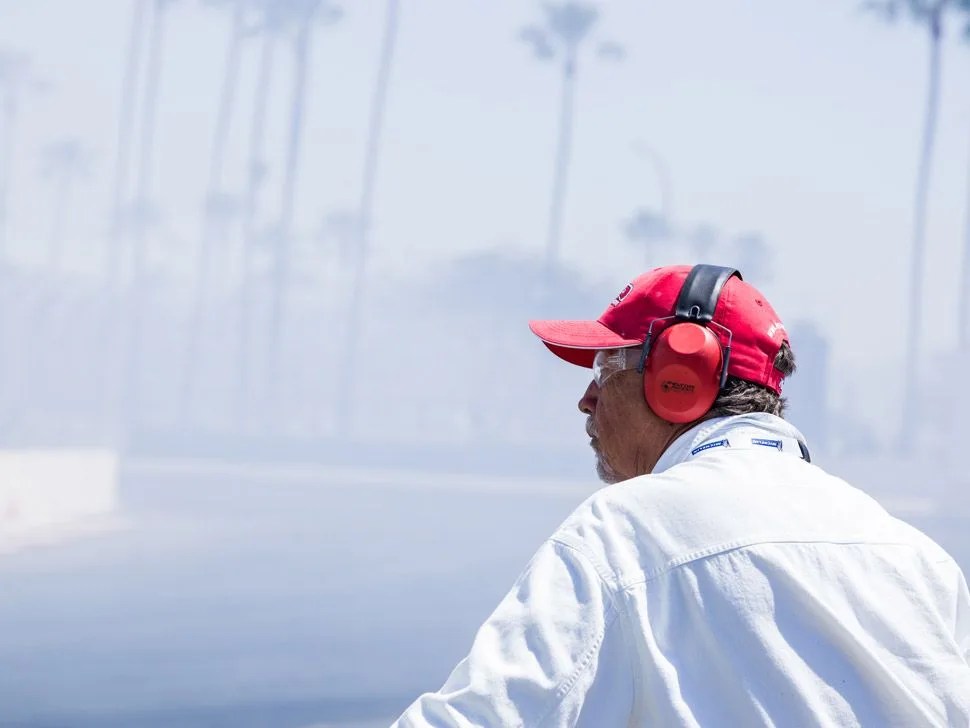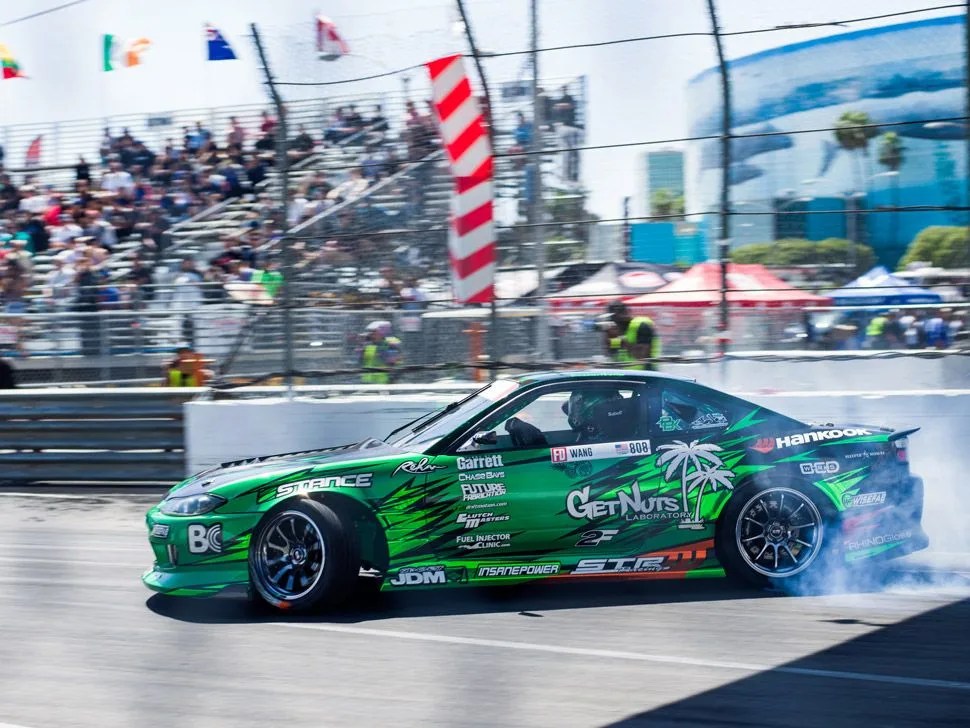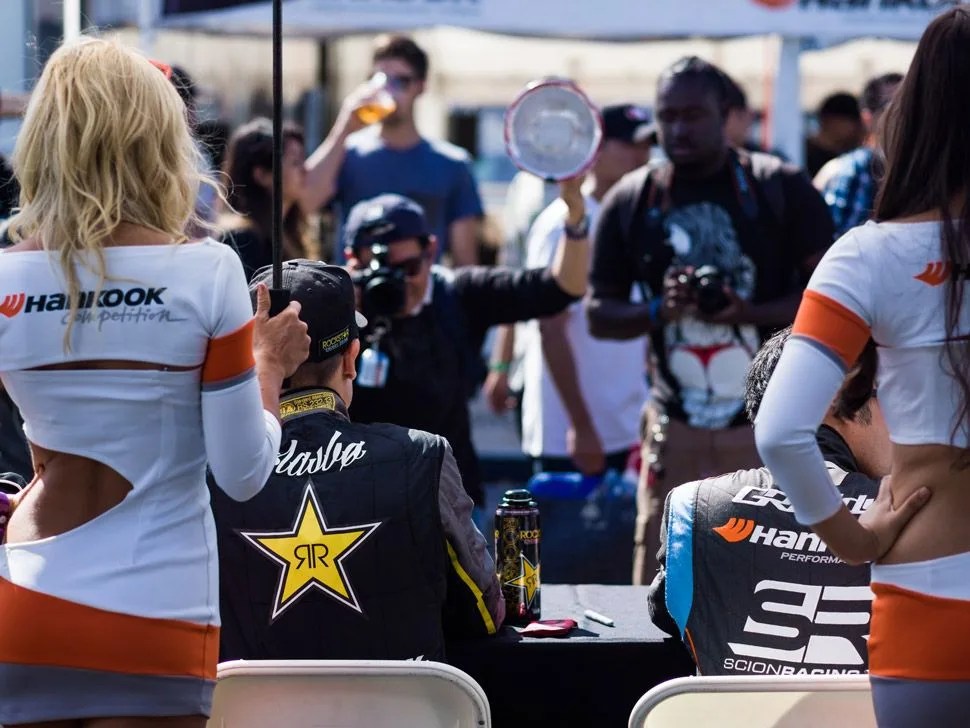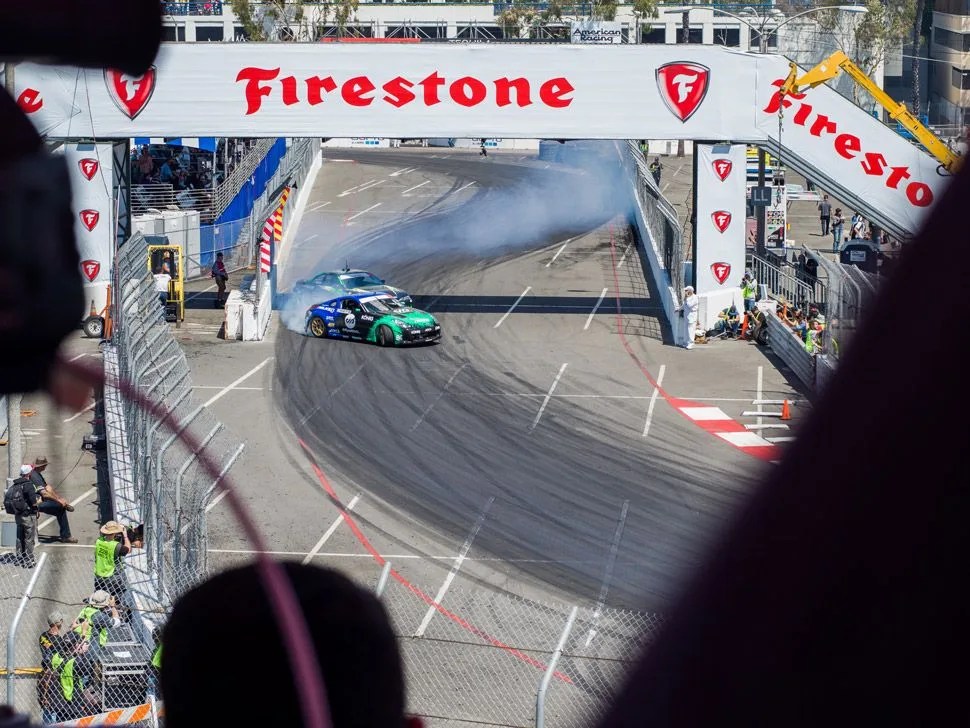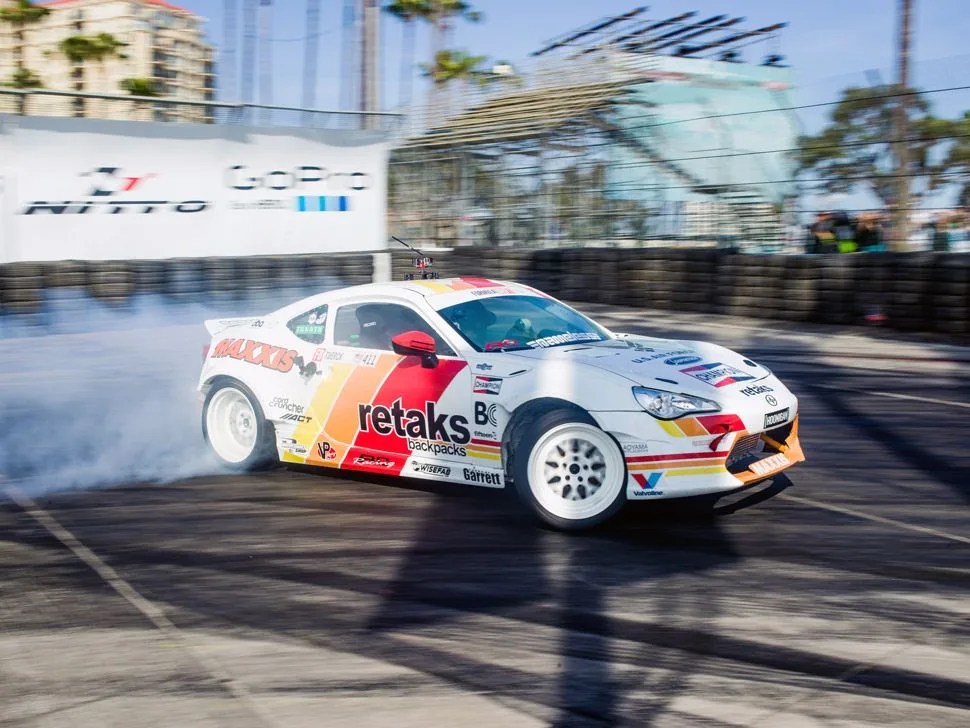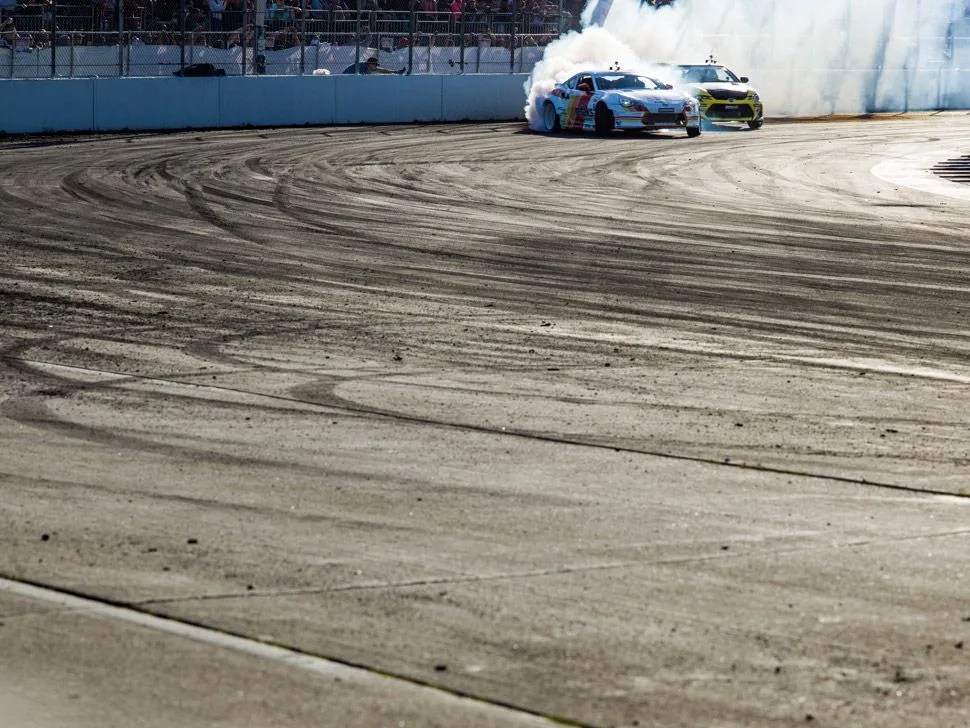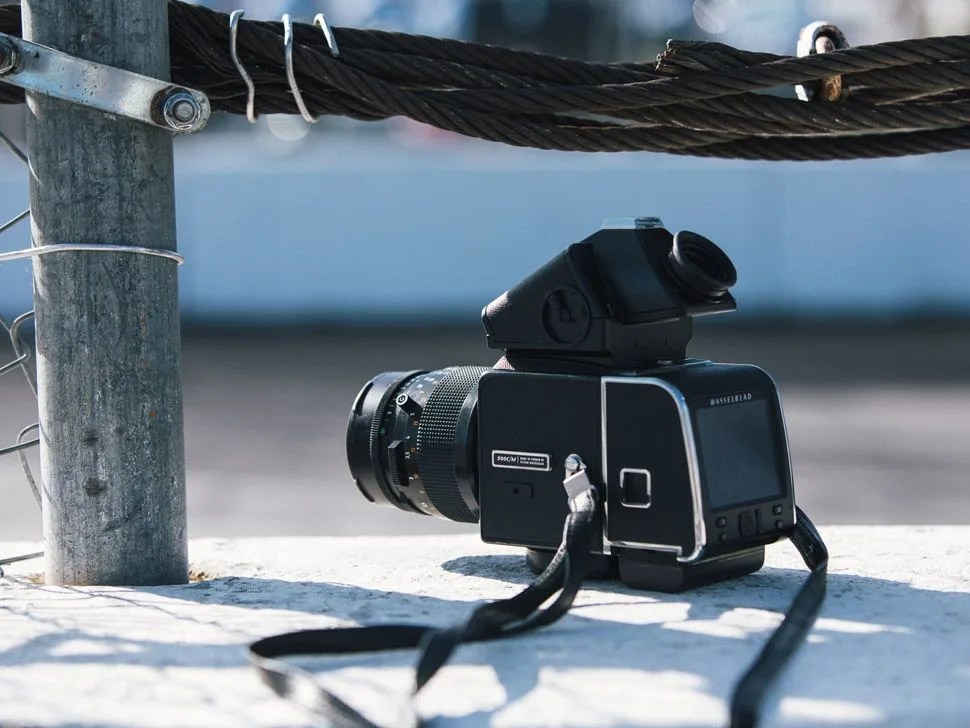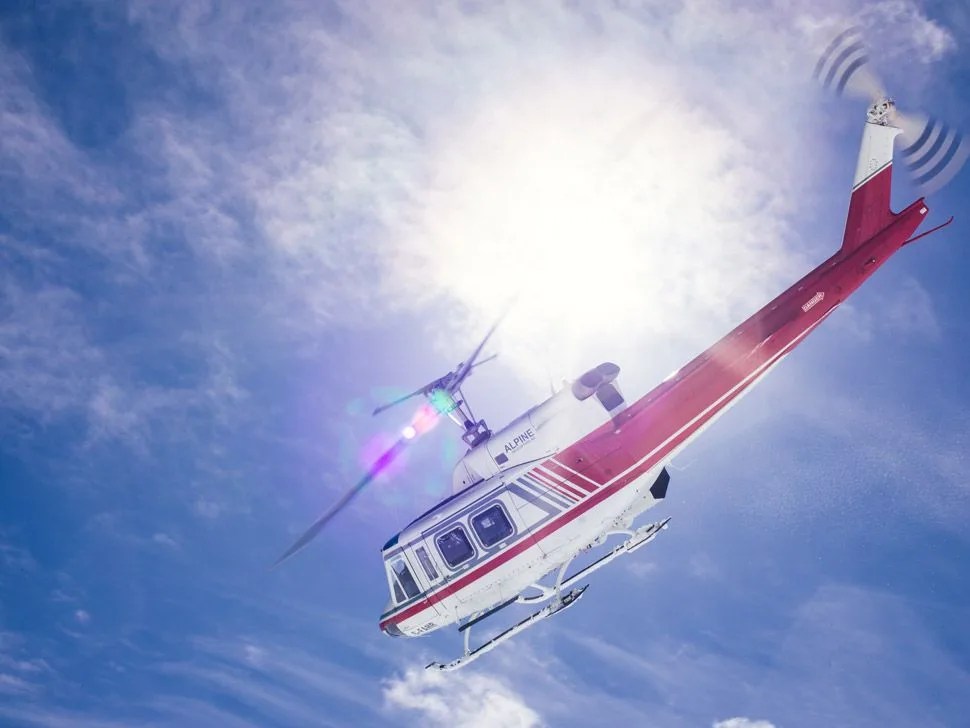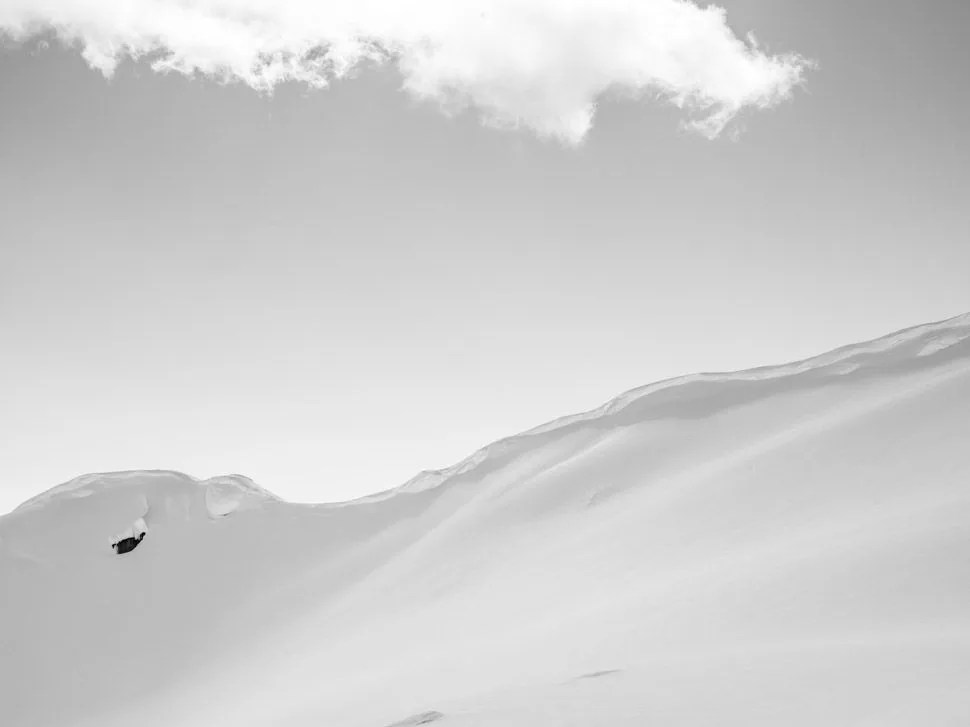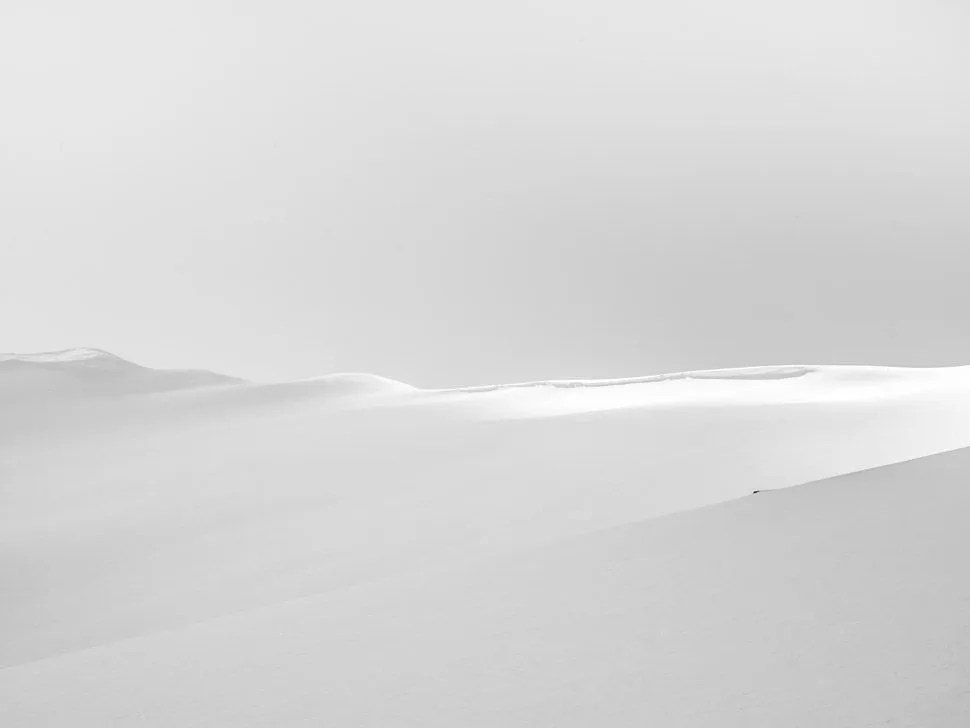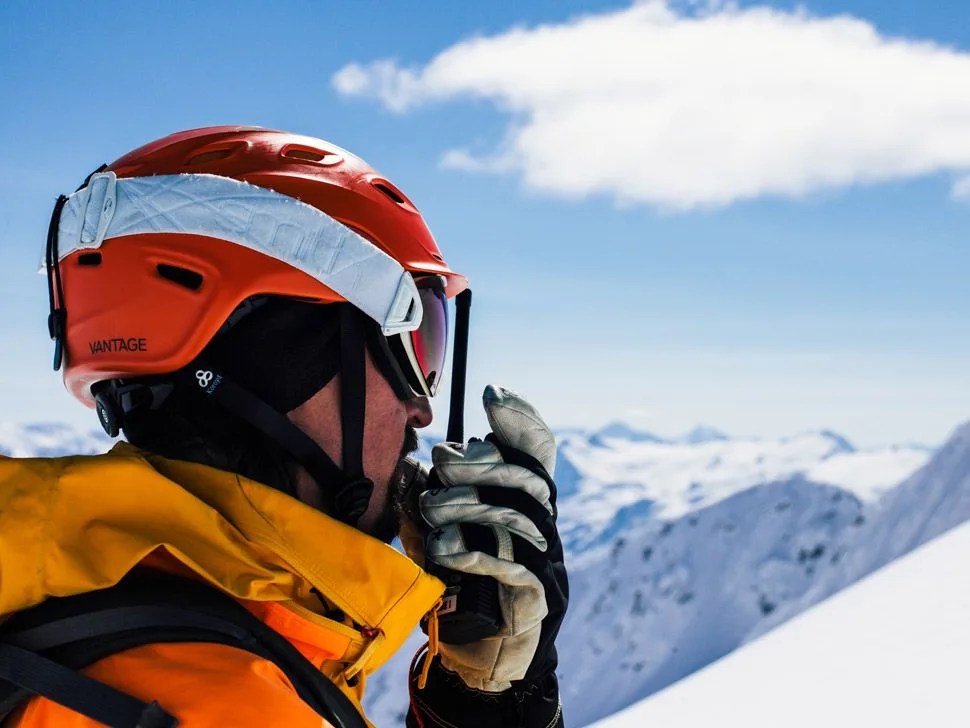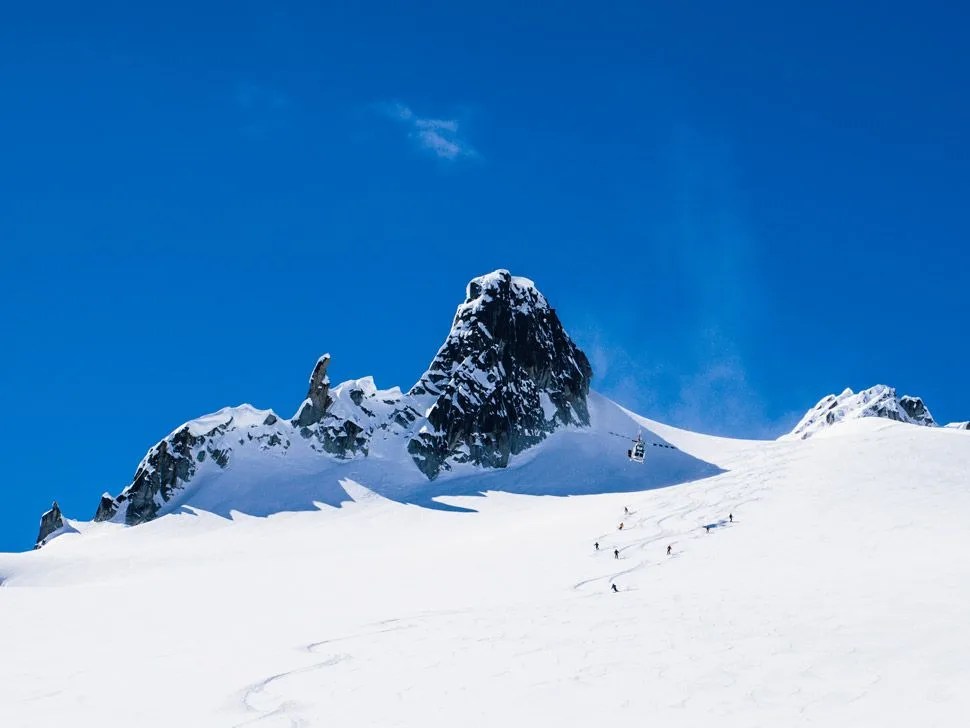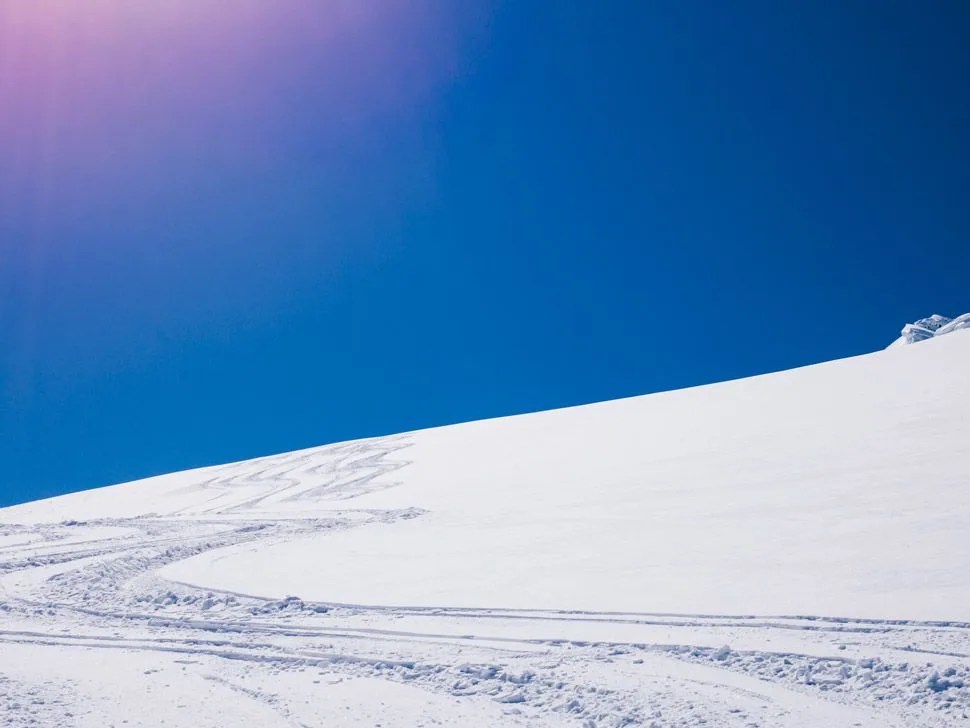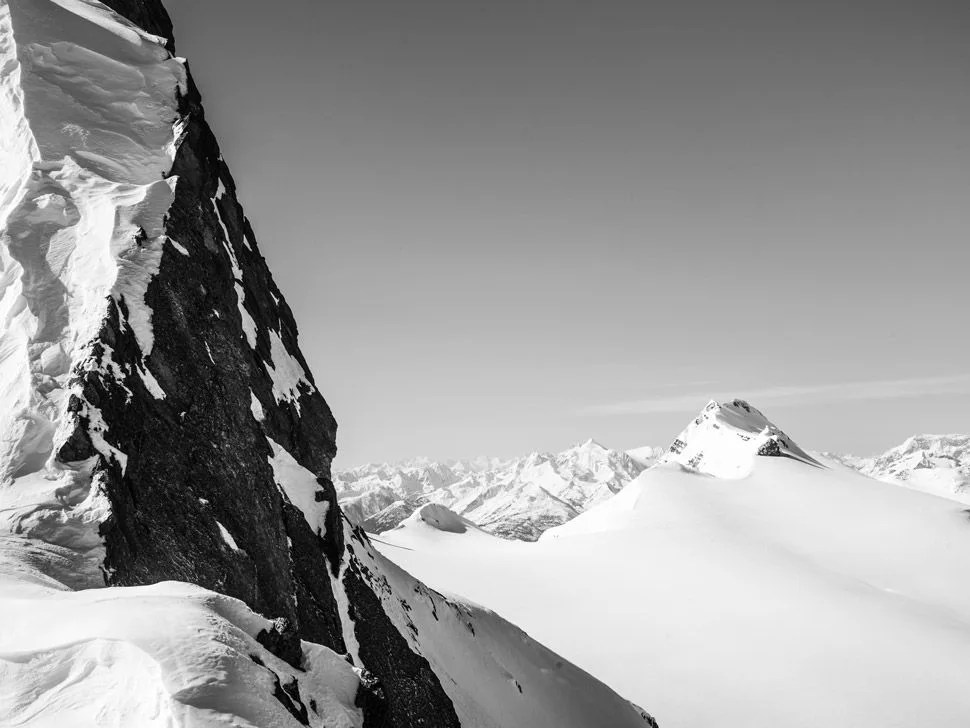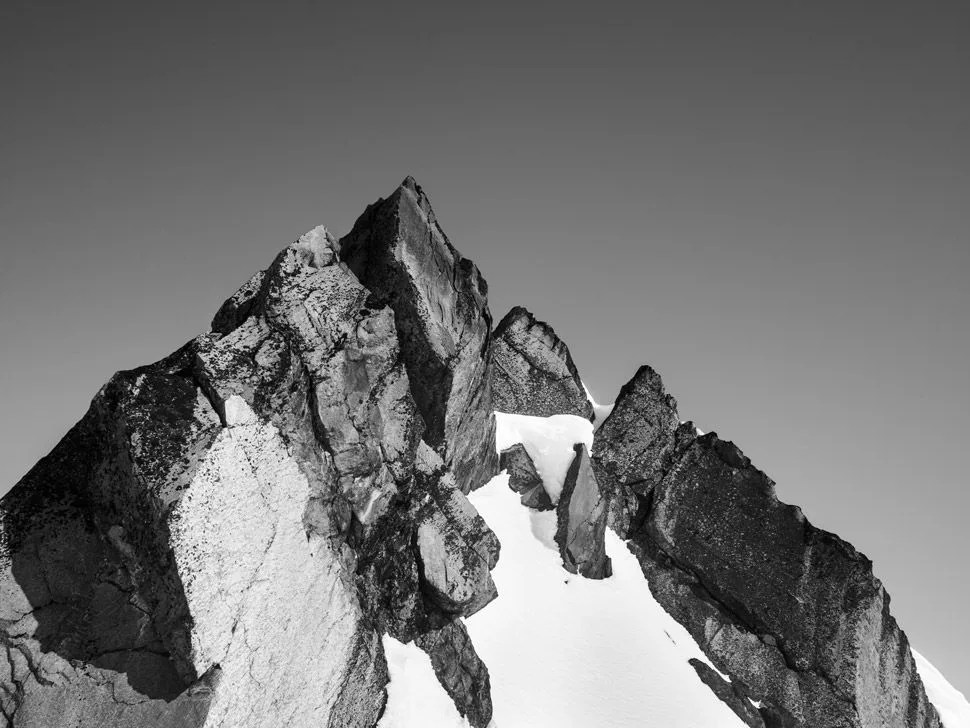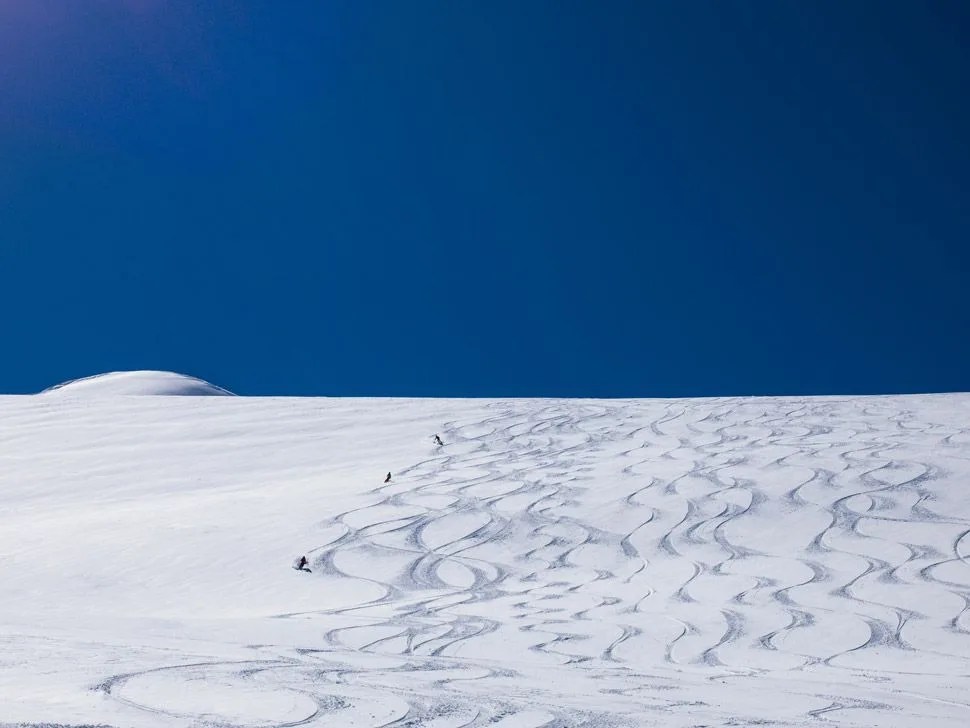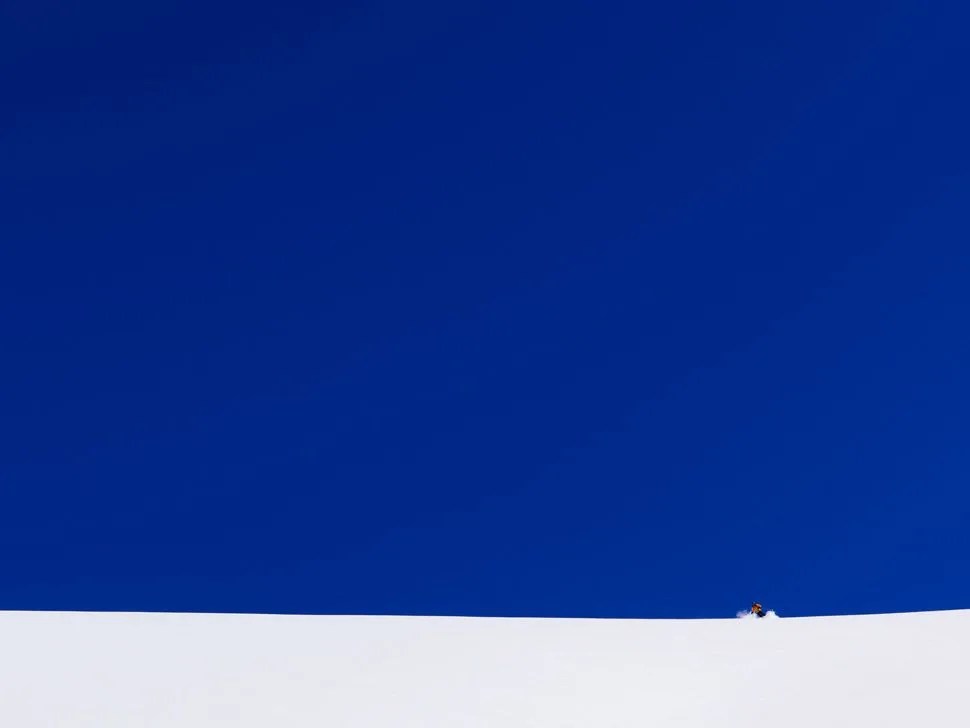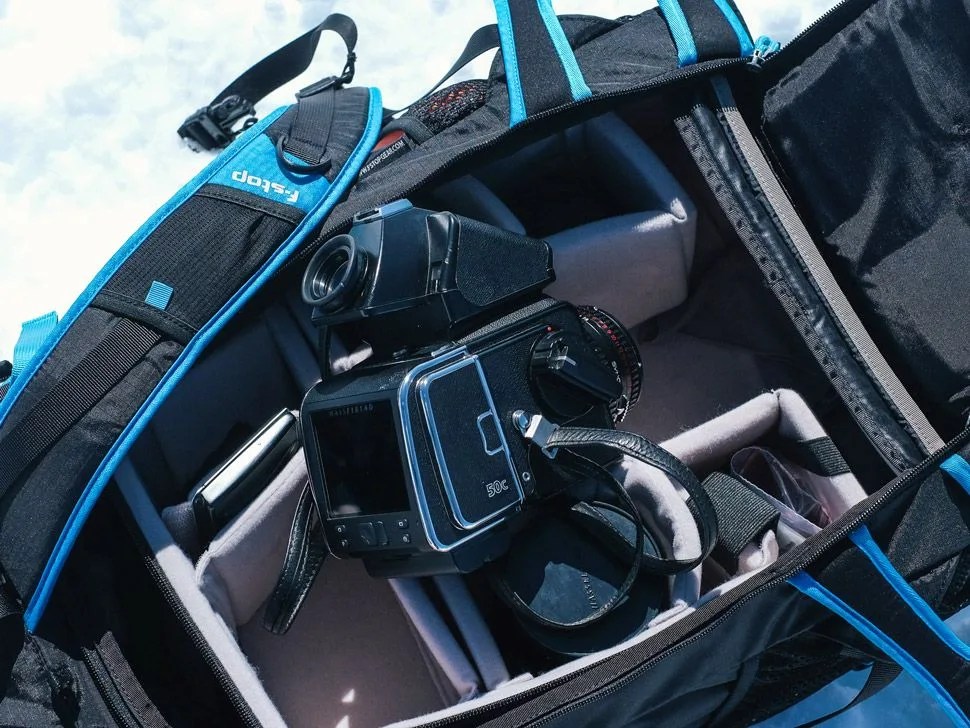A good-condition Hasselblad 500 c/m medium-format camera with all the necessary shooting equipment and a great 80mm f/2.8 Carl Zeiss lens can be bought for about $800 these days. It will be anywhere between 20 and 50 years old, shoot beautiful 6cm x 6cm images (about four times as big as normal 35mm film) and be one of the most rewarding photo experiences you can have. The downside? You’ll have to deal with film and all the hassle (and fulfillment!) that comes with shooting analog. Thankfully, if you want to shoot a Hasselblad 500 with the modern convenience of digital, there’s a recently released accessory called the CFV-50c. It replaces the film portion of any Hasselblad since 1957 with a medium-format, 50-megapixel digital sensor, taking a fun camera to play around with and turning into one of the best cameras available on earth if you have $15,000 to spare. I decided to see what it’s capable of by shooting it in the studio, through the tire smoke of a Formula Drift event and heli-skiing in the Canadian Selkirk mountains.
Hasselblad began its dive into camera manufacturing in a rather strange way. In the early years of World War II, the Swedish Air Force managed to capture a German aerial spy camera and asked Victor Hasselblad to design a duplicate for the Allies. Hasselblad famously replied, “No, but I can make a better one.” Between the resulting camera (called the HK7) and the succeeding SKa4, Hasselblad made 342 cameras for the Swedish Air Force during the war while also supplying watch and clock parts.
After the war, Hasselblad began to experiment with civilian cameras, beginning with the 1600 F in 1948 and hitting the nail on the head with the iconic 500c in 1957. From then until it was finally discontinued in 2013, the V-System’s (Hasselblad’s name for their manual, medium-format SLRs) signature modular, cube-shaped design with interchangeable film backs was incrementally improved but remained amazingly similar to the first iteration.
The Hasselblad’s biggest test came first, and it was one that I frankly wasn’t expecting the camera to pass.
As a result of the camera’s legendary mechanical durability (no doubt aided by the company’s watchmaking history), image quality, ease of use and unbelievable life span it managed to embed itself into popular culture like no other camera. The first color picture of earth, the cover of Abbey Road, and one of the most iconic photos Ansel Adams ever took were all shot on a Hasselblad.
It wasn’t too much of a surprise, then, that although Hasselblad no longer makes their most famous camera, they decided to release the CFV-50c, a digital back specifically designed to match — both mechanically and aesthetically — the design of the 500 series cameras right down to the leatherette cover.
While the CFV-50c looks like it might have been made in 1965, the internals are all 2015. The back attaches just like any standard film back but offers a 50-megapixel CMOS sensor, an ISO range from 100 to 6400, raw file recording to either a computer or compact flash card and compatibility with every Hasselblad camera made since 1957.


